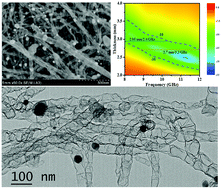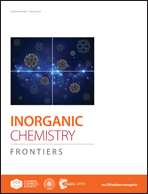In situ regulating aspect ratio of bamboo-like CNTs via CoxNi1−x-catalyzed growth to pursue superior microwave attenuation in X-band†
Abstract
Carbon material systems, in particular carbon nanotube (CNTs)-based composites, have been demonstrated as potential electromagnetic absorbers if some difficulties, e.g., poor dispersion and lower skin-depth can be solved. To address the above barriers, amorphous bamboo-like carbon nanotubes (BCNTs) with controlled length/diameter ratios were catalyzed by tunable magnetic CoxNi1−x alloys through a facile in situ approach in this research. Such BCNT configuration can suppress the inverse microcurrent intensity and present boosted impedance matching behavior. Meanwhile, an improved dispersion state of BCNTs was achieved as compared to that of common graphited CNTs. Furthermore, reflection loss is highly influenced by the aspect ratio of BCNTs. After tailoring BCNTs to proper diameter, the sample of BCNTs/Co0.2Ni0.8 almost exhibited complete absorption focusing on X-band at low filler ratio of 20 wt%. This composite may be used as a light and efficient microwave absorber in X-band.



 Please wait while we load your content...
Please wait while we load your content...